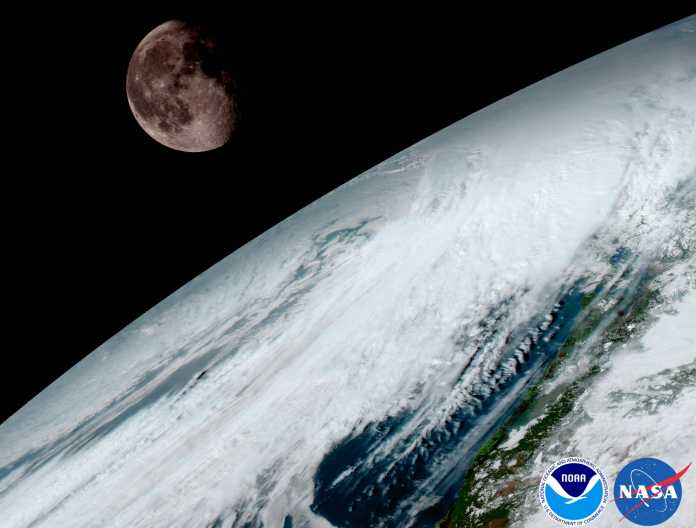Weather images in HD: USA launches new weather satellite
For the last time, the USA has launched a weather satellite from the GOES series into space. The observation of the sun's corona is new.

Artist's impression of the GOES-19 (GOES-U) weather satellite placed in orbit
(Image: NOAA)
GOES-U has been launched. The Geostationary Operational Environmental Satellite U was launched into space on Wednesday night from Cape Canaveral in Florida on board a SpaceX Falcon Heavy rocket. It is the most advanced weather satellite of the US weather agency NOAA (National Oceanic and Atmospheric Administration). The device, which weighs several tons, will be in service for 15 years at an altitude of around 42,000 kilometers at approximately 75 degrees west and will collect weather and environmental data from the American continents and the Atlantic including the Caribbean to the West African coast.
Upon reaching its orbit, GOES-U will be renamed GOES-19. At the same time, the satellite will bear the functional designation GOES-East for as long as it fulfills this function. The previous GOES-East satellite, GOES-16 (originally GOES-R), will be kept in reserve until further notice.
Also targeting solar flares
GOES-East has a sibling called – guess – GOES-West at around 137 degrees west. Together, they collect data on clouds, lightning, magnetic fields, ultraviolet light and X-rays. Only GOES-U has an additional measuring device facing the sun, the Compact Coronagraph-1 (CCOR-1). Its lens covers the sun itself so that the sensors can detect the solar corona.
This serves to detect solar flares that are directed towards the Earth and could endanger electrical and electronic systems. Until now, researchers have mainly relied on the ESA and NASA Solar and Heliospheric Observatory for corona observation, which is due to cease operations next year.
Billions for better forecasts
GOES-U weighs almost three tons empty and five tons with fuel. It is intended to provide particularly high-resolution data in rapid succession and thus improve the forecasting of weather and possible storms, disasters and fires triggered by lightning. But it's not cheap: the project with the four most recent, very similar GOE satellites -R, -S, -T, and -U alone will have cost tens of billions. Back in 2006, the project costs were estimated at 11.6 billion US dollars. The four satellites were supplied by Lockheed-Martin.
NOAA's series of GOE satellites began in 1975. 19 satellites have been launched since then, but one further launch was unsuccessful. 13 of the earth satellites are already out of service. Two (-14 and -17) are in reserve and will soon be joined by -16. GOES-15 was handed over to the US Space Force last year. With -18 and -19, two satellites will actively collect data for the NOAA, as GOES-West and -East.
The agency is currently working on a new system called GeoXO, the Geostationary Extended Observations satellite system. However, the first launch is not planned until 2032.
Erste Bilder von GOES-16 (10 Bilder)

(Bild: NOAA/NASA)
(ds)